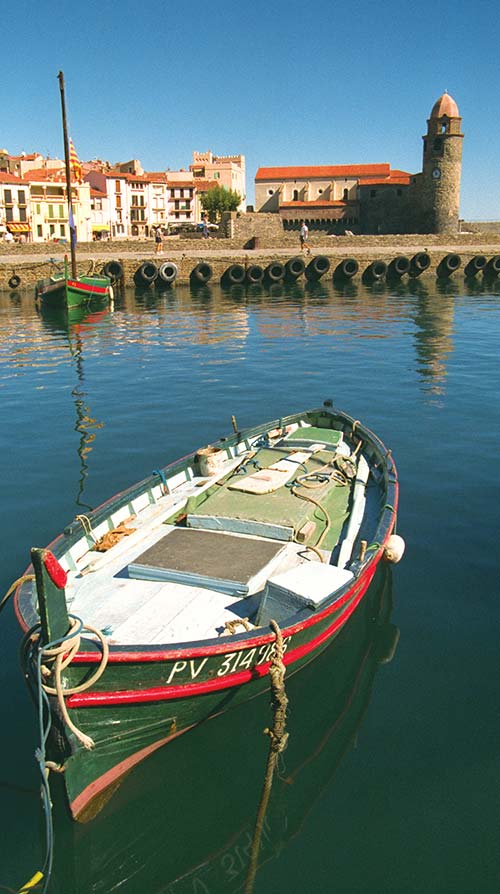
Bienvenue! You’ve chosen well. France is Europe’s most diverse, tasty, and, in many ways, most exciting country to explore. It’s an intriguing cultural bouillabaisse that will challenge your preconceptions and inspire you to think differently.
France is a place of gentle beauty, where the play of light transforms the routine into the exceptional. Here, travelers are treated to a blend of man-made and natural beauty like nowhere else in Europe. With luxuriant forests, forever coastlines, truly grand canyons, and Europe’s highest mountain ranges, France has a cover-girl beauty from top to bottom. You’ll also discover a dizzying array of artistic and architectural wonders—soaring cathedrals, chandeliered châteaux, and museums filled with the cultural icons of the Western world.
In many ways, France is a yardstick of human achievement. Here, travelers can trace the whole of European history, from the earliest prehistoric cave paintings to Roman ruins that rival Italy’s. In medieval times, France cultivated Romanesque and Gothic architecture, erecting the great cathedrals and basilicas of Notre-Dame, Chartres, Vézelay, and a dozen others. With their innovative designs, French architects set the trends for cities throughout Europe—and with their revolutionary thinking, French philosophers refined modern thought and politics. The châteaux of the Loire Valley and the grand palace of Versailles announced France’s emergence as the first European superpower and first modern government. It was France that gave birth to Impressionism and the foundations of modern art. Today’s travelers can gaze dreamy-eyed at water lilies in Claude Monet’s Giverny, rejoice amid the sunflowers of Provence that so moved a troubled Vincent van Gogh, and roam the sunny coastlines that inspired Picasso and Matisse. And after all these centuries, France still remains at the forefront of technology, fashion, and—of course—cuisine.
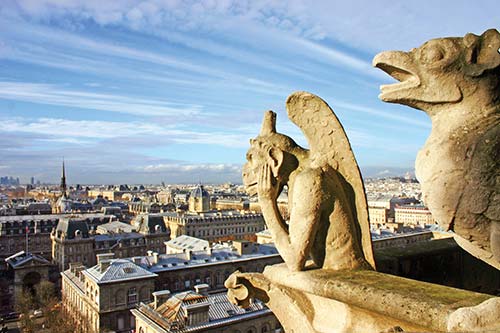
There are two Frances: Paris...and the rest of the country. France’s top-down government and cultural energy have always been centered in Paris, resulting in an overwhelming concentration of world-class museums, cutting-edge architecture, and historic monuments. Travelers can spend weeks in France and never leave Paris. Many do.
The other France venerates land, tradition, and a slower pace of life. After Paris, most travelers will be drawn to romantic hill towns and castles, meandering rivers and canals, and oceans of vineyards that carpet this country’s landscape. Village life has survived in France better than in most other European countries because France was so slow to urbanize. It was an agricultural country right up until World War II (when a smaller proportion of French citizens lived in cities than Italians did 500 years earlier). And today, even as young people are chasing jobs in the cities, France remains farm country. Everyone venerates the soil (le terroir) that brings the flavor to their foods and wines and nourishes a rural life that French people dream about. So although the country’s brain resides in Paris, its soul lives in its villages—and that’s where you’ll feel the real pulse of France.
France offers more diversity than any other nation in Europe; moving from region to region, you feel as if you’re crossing into a different country. Paris and the region around it (called Ile de France) is the “island” in the middle that anchors France. To the west are the dramatic D-Day beaches and Tudor-style, thatched-roofed homes of Normandy; to the south lie the river valleys of the Loire and Dordogne, featuring luxurious châteaux, medieval castles, and hill-capping villages. Explore under-the-radar France to the far southwest, in the Spanish-tinged Languedoc-Roussillon region. Closer to Italy, sunbaked and windswept Provence nurtures Roman ruins and rustic charm, while the Riviera celebrates sunny beaches and yacht-filled harbors. And to the east, travelers encounter Europe’s highest snow-capped Alps, the venerable vineyards of Burgundy, and the Germanic villages and cuisine of Alsace.
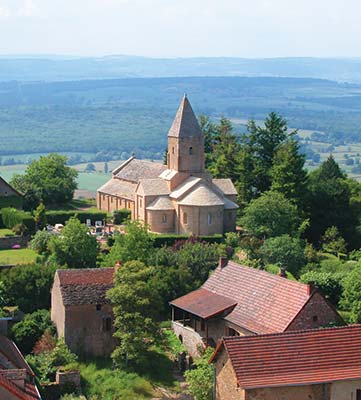
The forte of French cuisine lies in its regional diversity. You’ll enjoy Swiss-like fondue in the Alps, Italian-style pasta and pesto on the Riviera, fresh oysters and mussels in Brittany, Spanish paella in Languedoc-Roussillon, and German sauerkraut mixed with fine wine sauces in the Alsace. C’est magnifique—you can taste a good slice of Europe without stepping outside of France.
Each region also produces a wine or other drink that complements its cuisine—such as rich Burgundy wines that go perfectly with coq au vin, meaty wines from Languedoc-Roussillon to counter heavy cuisine (such as cassoulet), fruity Côtes du Rhône wines that work well with herb-infused Provençal dishes, and dry whites in Alsace that meld perfectly with the Germanic cuisine. And in Normandy and Brittany, you’ll enjoy apple ciders with crêpes and fresh seafood.
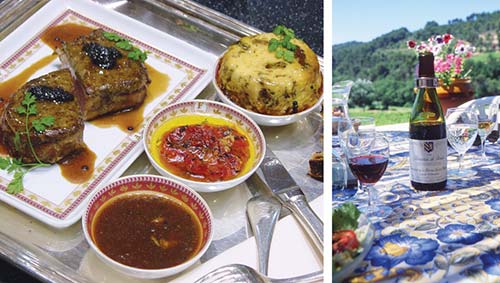
As if that weren’t enough, France is also famous for its many pâtés, foie gras, over 400 different cheeses, sizzling escargots, herbes de Provence, raw meats, fine wine sauces, French fries, duck and lamb dishes, pastries, bonbons, crème brûlée, and sorbets.
L’art de vivre—the art of living—is not just a pleasing expression; it’s a building block for a sound life in France. With five weeks of paid vacation, plus every Catholic holiday ever invented, the French are forced to enjoy life. It’s no accident that France is home to linger-longer pastimes like café lounging, fine dining, Club Med vacations, barge cruising, and ballooning. You’ll run headlong into that mindful approach to life at mealtime. The French insist on the best-quality croissants, mustard, and sparkling water; they don’t rush lunch; and an evening’s entertainment is usually no more than a lovingly prepared meal with friends.
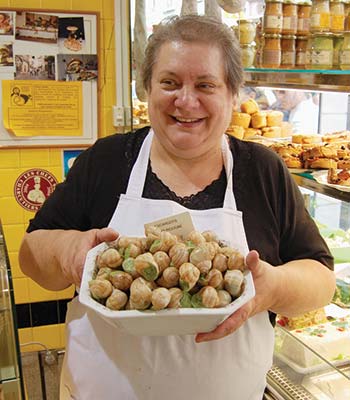
France demands that the traveler slow down and savor the finer things; a hurried visitor will miss the “this is what matters” barge and blame the French for being lazy. One of your co-authors learned this lesson the hard way while restoring a farm house in Burgundy—and found that it’s counterproductive to hurry a project past its “normal pace.”
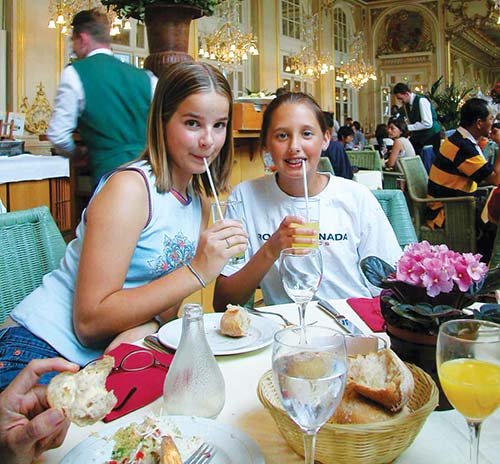
In spite of lavish attention to relaxation, the French are a productive people. French inventors gave us the metric system, pasteurization, high-speed trains, and Concorde airplanes. More importantly, this country rose from the ashes of two debilitating world wars to generate the world’s seventh-largest economy. This is thanks in part to determined government intervention that continues today (government spending is 48 percent of GDP). Wine, tourism, telecommunications, pharmaceuticals, cars, and Airbus planes are big moneymakers. France is also the European Union’s leading agricultural producer and a chief competitor of the US. You’ll pass endless wheat farms in the north, dairy farms in the west, vegetable farms and fruit orchards in the south...and vineyards and sunflowers just about everywhere.
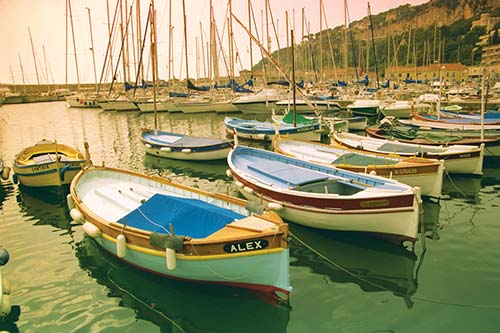
With no domestic oil production, France depends on nuclear power generation, which now accounts for more than 75 percent of the country’s electricity production (although renewable energy sources are gaining ground). Electricity is expensive, so the French are careful to turn out lights and conserve—something to remember when you leave your hotel room for the day or evening. Although France’s economy may be one of the world’s largest, the French remain skeptical about the virtues of capitalism and the work ethic. Business conversation is generally avoided, as it implies a fascination with money that the French find vulgar. (It’s considered gauche even to ask what someone does for a living.) In France, CEOs are not glorified as celebrities—chefs are.
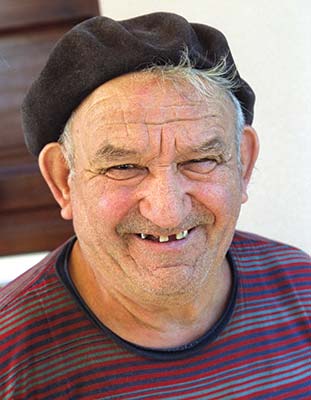
The French believe that the economy should support social good, not vice versa. This has produced a cradle-to-grave social security system of which the French are proud. France’s poverty rate is half of that in the US, proof to the French that they are on the right track. On the other hand, if you’re considering starting a business in France, think again—taxes are formidable. France is routinely plagued with strikes, demonstrations, and slow-downs as workers try to preserve their hard-earned rights in the face of a competitive global economy.
As you travel, you’ll find that the most “French” thing about France is the French themselves. Be prepared to embrace (or at least understand) the cultural differences between you and your French hosts. You’ll find the French to be reserved in the north and carefree in the sunny south. Throughout the country, they’re more formal than you are. When you enter a store, you’ll be greeted not simply with a “Bonjour,” but with “Bonjour, Monsieur (or Madame).” The proper response to the shopkeeper is “Bonjour, Monsieur (or Madame).” If there are others present, you’d say, “Bonjour, Messieurs (or Mesdames)”—just to make sure you don’t leave anyone out. (For more on the French attitude toward language, see here.)
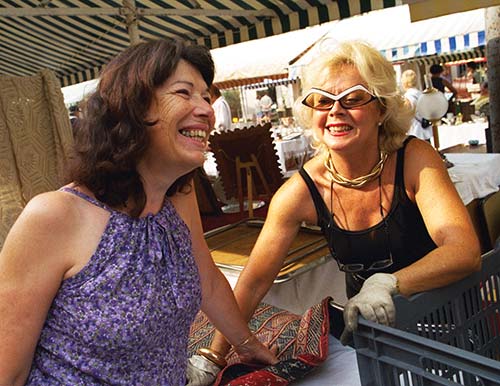
The French are overwhelmingly Catholic but not very devout, and are quick to separate church from state. They are less active churchgoers than Americans, whom they find très evangelical. And in France you don’t go to church to socialize or to help in charitable deeds (that’s what taxes are for). France is also Europe’s largest Muslim nation, with well over six million followers (there are twice as many Muslims in France as Protestants). The influx of Muslim immigrants has led to considerable problems of assimilation and remains one of France’s thorniest issues to resolve.
The French don’t seem particularly athletic—unless you consider tossing little silver balls in the dirt (pétanque, a.k.a. boules) a sport. A few jog and exercise regularly, and fewer play on recreational teams—though you will find country lanes busy with bike riders hunched over handlebars on weekends. The French are avid sports-watchers. Soccer is king, bike racing is big, and rugby is surprisingly popular for such a refined place. Le basket (basketball) is making a move, with a French league and several French NBA stars, including Tony Parker.
Another passion the French share with Americans is their love of movies. They admire Hollywood blockbusters, but they’ve also carved out their own niche of small-budget romantic comedies and thought-provoking thrillers.
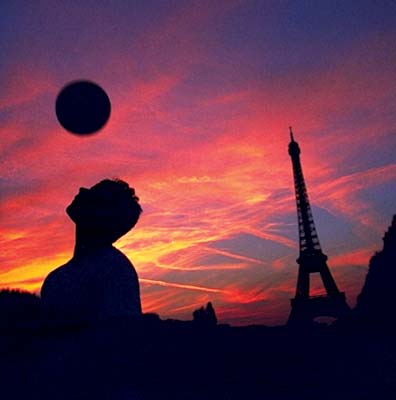
Today’s France will challenge many of your preconceptions. The French have a Michelin Guide-certainty in their judgments and are often frank in how they convey their opinions. (Just ask about the best wine to serve with any given course.)
The French see the world differently than we do. The right to bear arms, the death penalty, minuscule paid vacations, and health care as a privilege rather than a basic human right—these American concepts confound the average Jean. And they don’t understand the American need for everyone to be in agreement all the time. Whether it’s Iraq, Vietnam, or globalization, the French think it’s important to question authority and not blindly submit to it. Blame this aversion to authority on their Revolution hangover.
For hurried travelers, the French can be a complicated people to understand. But remember where they’ve come from: In just a few generations, they’ve seen two world wars destroy entire cities, villages, landscapes, and their self-respect. They’ve watched as America replaced them as the world’s political and cultural superpower. On the bright side, they’ve seen their country re-emerge as a global force, with nuclear weapons, a space program, an international spy network, and their own ideas about geopolitics. Like Americans, they’re trying to find their place in an increasingly global, multicultural world. Today, they just don’t want to be taken for granted. And while the French may—or may not—love your country’s politics, this has no bearing on how they will treat you as an individual.
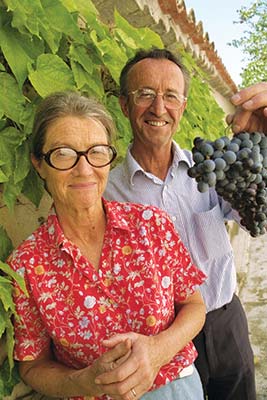
As you travel through this splendid country, come with an appetite to understand and a willingness to experience. Welcome new ideas and give the locals the benefit of your doubt. Accept France on its own terms and don’t judge. Above all, slo-o-o-ow down. Spend hours in cafés lingering over un café, make a habit of making unplanned stops, hop on the art de vivre barge, and surrender to the play of light as the Impressionists did.